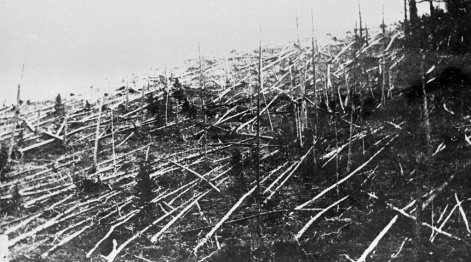Scientists are looking for microparticles of the Tunguska meteorite.
27 February 2020 г.

“The mystery of the Tunguska disaster worries scientists and the public. Many experts, taking part in expeditions, do not lose hope to unravel the scenario of the catastrophe in 1908, ”says Arthur Meidus, Deputy Director for Science of the Tunguska Nature Reserve. – Actually, there is no material body of the meteorite, but there are traces of a very strong explosion and its consequences preserved to this day and the researchers are engaged in their analysis. Modern scientific methods have made it possible to make great advances”.
According to Arthur Meidus, one of the methods is to reconstruct the event based on the analysis of bottom sediments of deep lakes, for example, Zapovednoe Lake. “This reservoir, although located outside the area affected in 1908, is of great interest. It is deep, and its silty sediments do not mix when being deposited, but settle and store information from the past. Among this information there is a history of continuous climate change and disastrous events. Spring-autumn wastewater and the Lakura river itself brought traces of the Tunguska catastrophe into this lake, as the event was accompanied by large-scale fires, release of particles of matter having both terrestrial and cosmic origin into the atmosphere, ”explains Arthur Meidus.
Experiments using modern methods of microanalysis, such as X-ray fluorescence analysis with the help of synchrotron radiation (scanning micro-XRF), have shown the possibility of a targeted search for microparticles of extraterrestrial origin in dated layers of the bottom sediments. The experts worked out this methodology at the example of bottom sediments of Lake Zapovednoye, and thus, revealed a layer dating from 1908 - 1910, microparticles and inclusions which were smaller than 10 microns in size, with some features of their composition being more similar to extraterrestrial matter than to a material of terrestrial origin.
“According to modern models, the explosion of the Tunguska object occurred at an altitude of about 8-10 km. A wave at the epicenter, going vertically downward, simply cut tree branches, leaving the trunks untouched, and propagating to the side, thus laying down a forest area of 2000 square kilometers in size, - says Andrei Daryin, candidate of geological and mineralogical sciences, senior researcher at the Laboratory of Lithogeodynamics of Sedimentary Basins of IGM SB RAS . - The trees were turned upside down, and in the spring of the following year, the terrigenous matter was washed off into the lakes, where it settled in a thick layer. In samples of the Zapovednoye bottom sediments, we found a highly pronounced light layer, whose composition (an increased content of potassium, titanium, rubidium, yttrium, and zirconium) allows us to associate it with the consequences of the explosion of the Tunguska cosmic body. Thus, we know in which layer of the bottom sediments particles of extraterrestrial matter can be found. We identified the criteria for searching in earlier studies involving samples of the Chelyabinsk and Sikhote-Alin meteorites. The next step involves the search for microparticles of unusual elemental composition using synchrotron radiation. Now we know where to look for them - if there is matter of extraterrestrial origin in the area under study, then it should be concentrated in the layer of 1908-1910."
Experiments on the study of bottom sediments by X-ray fluorescence analysis of the XRF using synchrotron radiation were carried out at the station "Local and scanning X-ray fluorescence elemental analysis" of the Center for Collective Use "Siberian Center for Synchrotron and Terahertz Radiation" of the Institute of Nuclear Physics SB RAS. The study is being performed within the project “Analysis of the sustainability of biodiversity in the territory of the Tungusky State Gas Processing Plant”, which involves the institutes of SB RAS and universities of Krasnoyarsk, as well as Czech and Italian universities and research institutes. It is worth noting that the objectives of the project are much deeper. One of the main goals is to create forecasts for future climate changes in Russia.
“For predicting future climate changes, it is important to know the periodic patterns of changes in temperature and humidity which are independent of human activity,” explains Denis Rogozin, doctor of Biological Sciences, leading researcher at the Institute of Biophysics of the Federal Research Center KSC SB RAS - The cycles can only be identified by reconstructing the paleoclimate, that is, “deciphering” the paleoarchives. Such archives are lake sediments. Climate reconstructions were made in different regions of Siberia, but Lake Zapovednoye is located in the center of a vast territory, almost completely unexplored from this point of view. The reconstruction of climate in Zapovednoye will allow us to fill the blanks in the map of the past climate in Siberia. ”
Source: Science in Siberia
Share:
